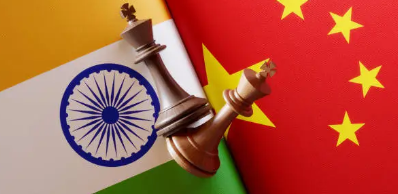
In a surprising geopolitical twist, India and China have once again joined hands on the technological front—this time in the urban transit sector. The Chennai Metro has partnered with Panasonic Manufacturing Beijing Co., Ltd. to implement advanced Platform Screen Doors (PSDs), a move that has caught the attention of the global community.
This development was announced via social media by the Chinese Ambassador to India, signaling not just a metro infrastructure deal but a larger shift in the strategic dynamics of Asia. The collaboration is being seen as a symbol of changing equations between the two Asian giants, particularly when viewed against the backdrop of recent political tensions.
What are Platform Screen Doors?
Platform Screen Doors are transparent, automated barriers installed on metro platforms. Their key functions include enhancing passenger safety, controlling crowd flow, improving air conditioning efficiency, and enabling smarter train operations. These systems are already in place in cities like Delhi, Mumbai, and Bengaluru, but Chennai Metro is taking this technology to a new level, with China’s support.
About Panasonic Manufacturing Beijing
Panasonic Manufacturing Beijing Co., Ltd., a key arm of the Panasonic Group headquartered in China’s capital, specializes in smart transport systems, energy-efficient solutions, and cutting-edge PSD technology. Their solutions are equipped with high-speed response mechanisms, AI-powered fault detection, and integrated safety protocols. With prior experience in countries like China, Japan, and Malaysia, Panasonic is now expanding its footprint in India once again.
Why This Partnership Matters
The timing of this deal is significant. Post the 2020 Galwan Valley clashes, India-China relations had turned cold. Yet, bilateral trade has reached record levels, and now we are witnessing technology transfer and infrastructure cooperation.
What makes this deal even more noteworthy is that Panasonic isn’t just supplying technology—they’re also utilizing Indian manufacturing capabilities. This will result in domestic production, job creation, and a new kind of supply chain strategy that merges China’s technological prowess with India’s manufacturing potential. It’s a clear shift from being merely a technology importer to becoming an equal partner.
A Wake-Up Call for the West and East Asia
This collaboration has sent ripples across Japan, South Korea, Europe, and the United States. There are growing concerns that India might be moving closer to China at a time when geopolitical alliances are rapidly evolving. The West has long seen India as a counterbalance to China, but this partnership challenges that notion.
What Does This Mean for the Public?
For Indian commuters, this translates to safer metro platforms, better adherence to time schedules, improved air conditioning during the harsh summers, and an overall boost to the development of future smart city infrastructure.
Strategic or Just Business?
This partnership underscores a profound reality: in today’s interconnected world, economic and technological collaboration can often override political friction. It signals that diplomacy isn’t just about borders and disputes—it’s also about innovation and shared progress.
Could anyone have imagined in 2020 that by 2025, India and China would once again be walking shoulder to shoulder in a strategic collaboration? The world is watching closely.
Disclaimer:
The information in this article is based on publicly available sources and social media announcements. The views expressed are for informational purposes only and do not constitute any geopolitical advice or official position. Readers are encouraged to conduct their own research and analysis.




